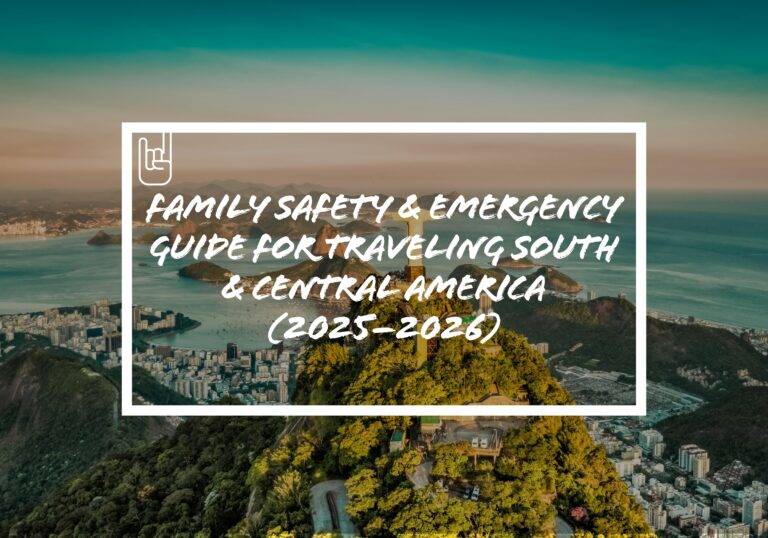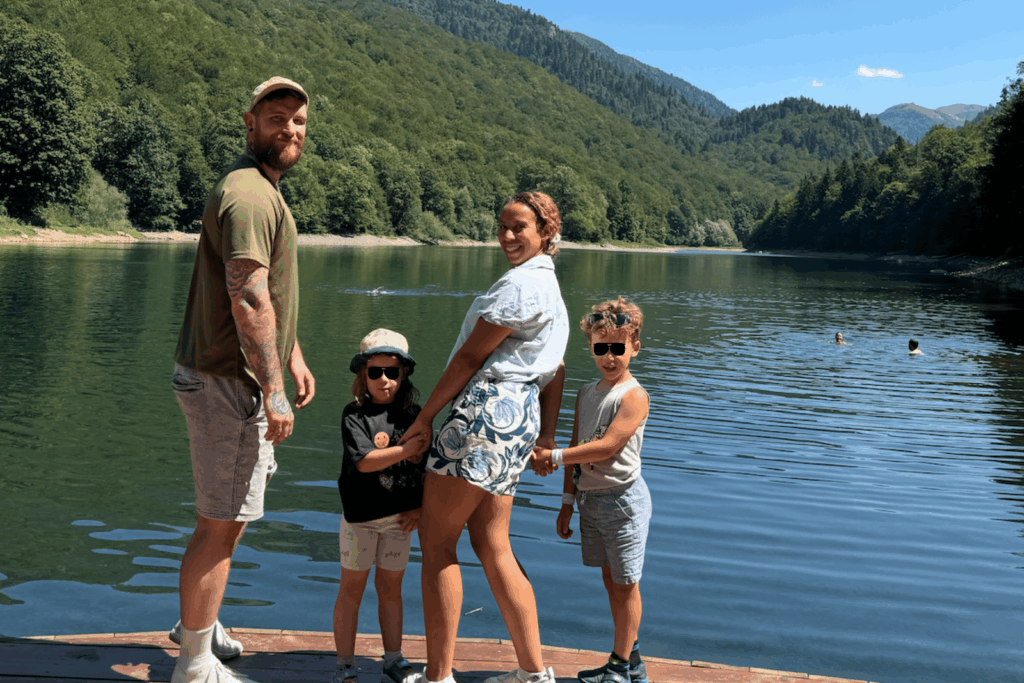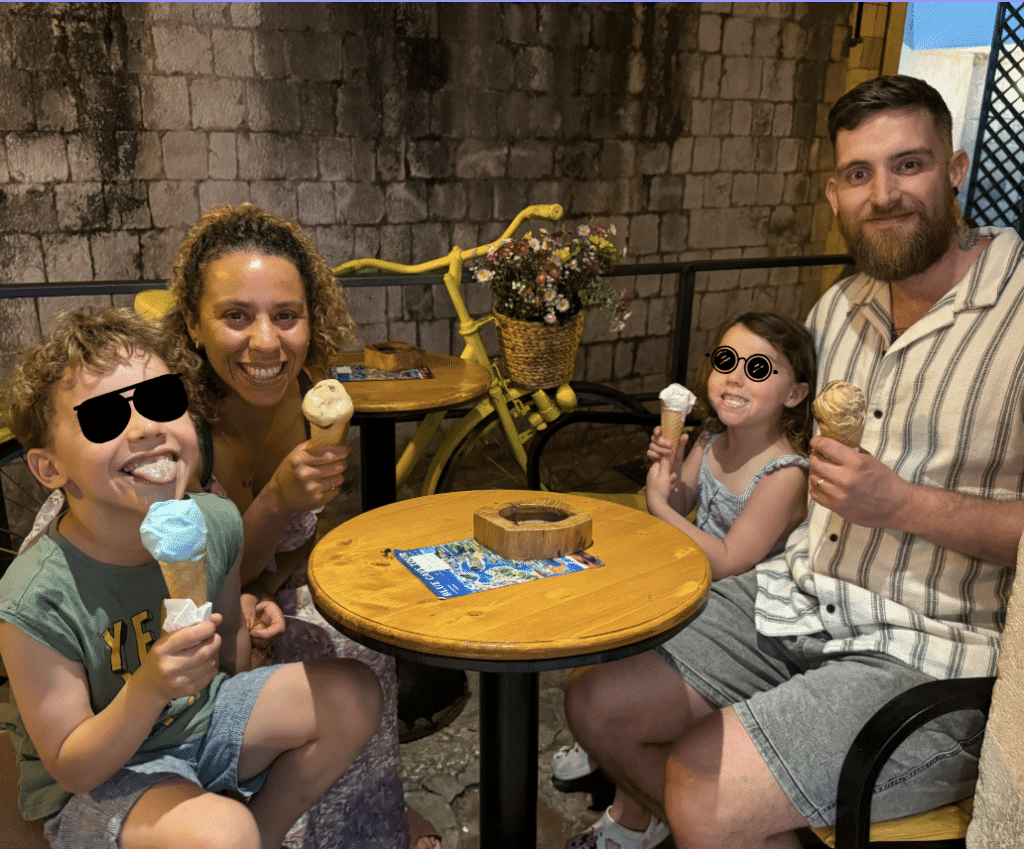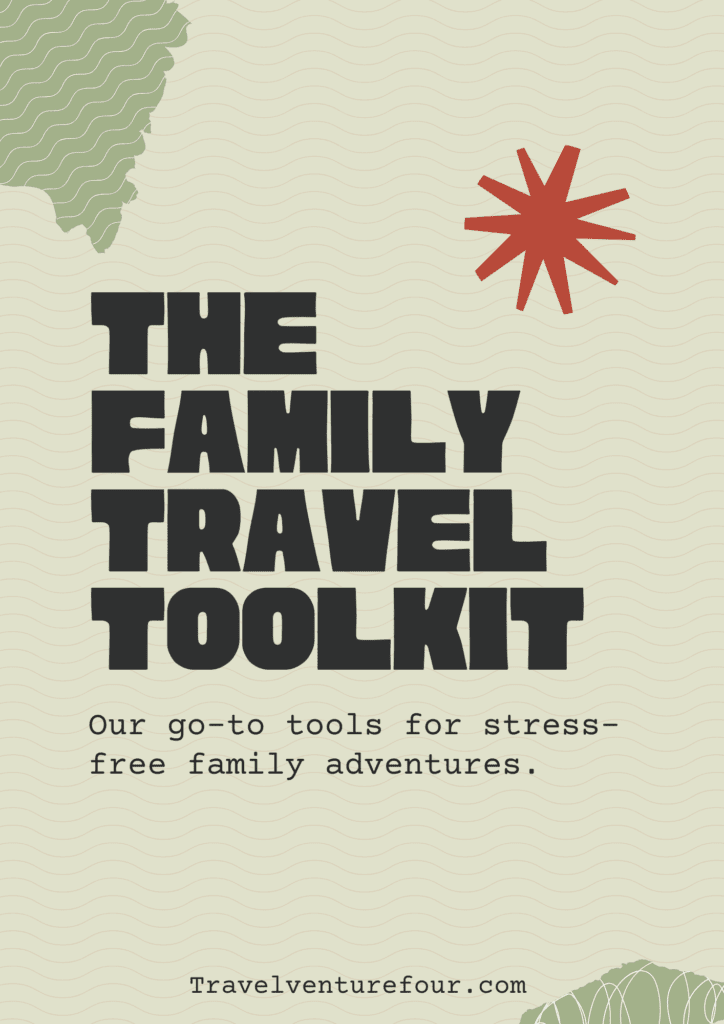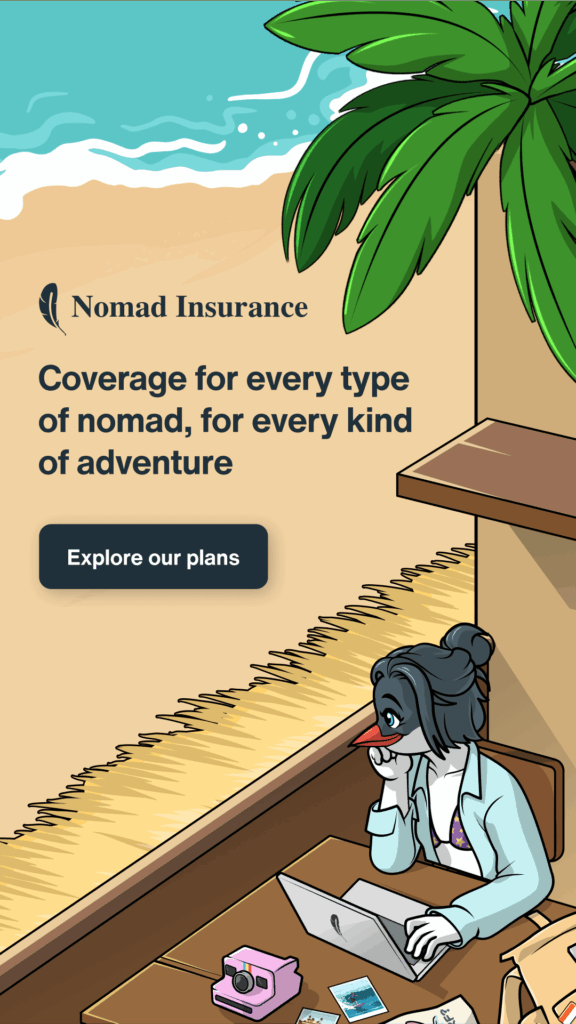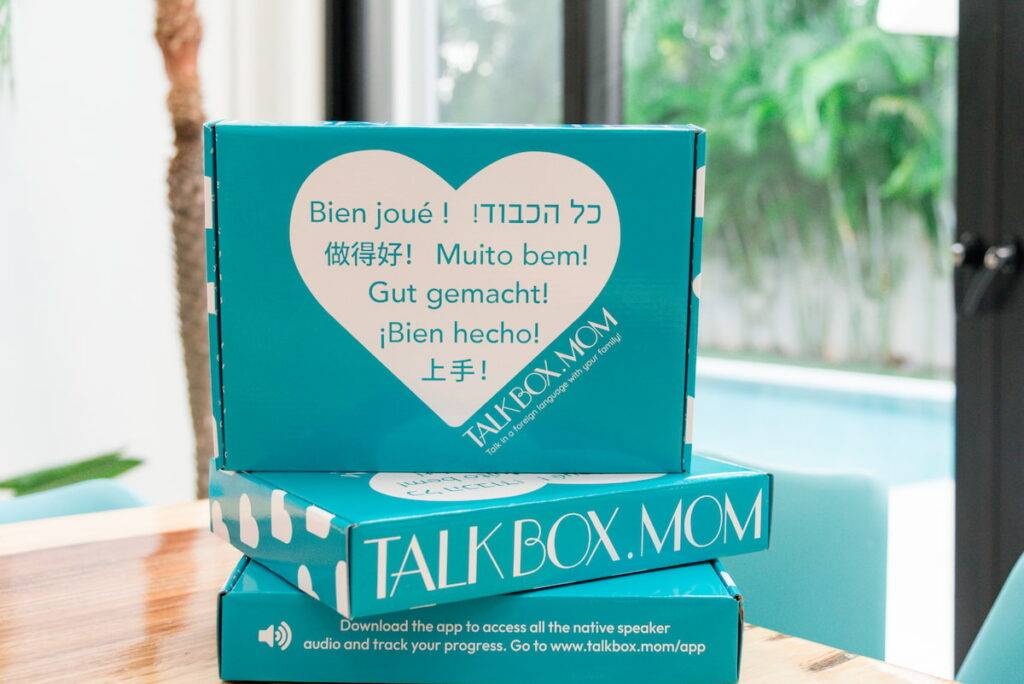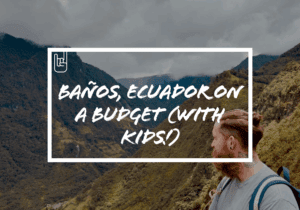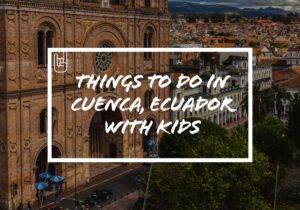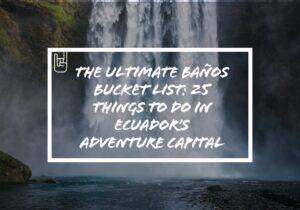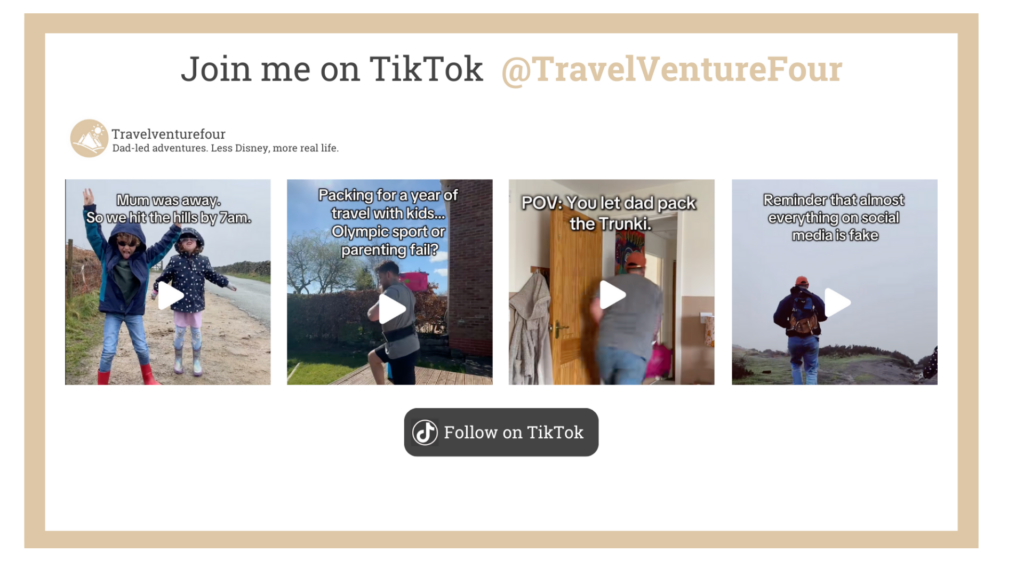Family Safety & Emergency Guide for Travelling South & Central America (2025–2026)
Is it safe to travel South and Central America with kids in 2025?
The short answer is yes, if you’re informed. From minor tremors to smart taxi use, this guide offers real-world data and practical strategies for travelling with confidence.
1. Why We Made This Guide
It started with a spreadsheet. Then another. And then one evening, my wife looked at me and said:
“Wait… what happens if there’s an earthquake?”
That’s when it hit us, we weren’t just planning itineraries and budgets. We were planning how to keep our family safe.
We’re not adrenaline junkies. We’re parents. And if you’re planning long-term travel with kids through South and Central America, you’ve probably asked yourself the same thing we did: Are we being naive… or just bold?
The Spark: Safety Questions That Deserve Honest Answers
My wife’s concern kicked off the deep dive. What we found was surprising: most family travel resources either gloss over safety or lean into fear-mongering. Think headlines about kidnapping and earthquakes, but little context or data to go with it.
The truth is more nuanced. Most risks are regional, seasonal, or preventable. But the key is knowing what’s real and what’s just anxiety bait.
The Goal: Awareness Without Alarm
This guide isn’t about stoking fear. It’s about empowering families to travel smarter, not scarier. We want our kids to grow up with a wide view of the world, and we believe that starts with us being prepared, not paranoid.
We’re not security experts. We’re a real family doing the research, making the calls, and building plans that help us feel confident on the road. This is the guide we wish we had when we started planning, and we hope it helps your family, too.
2. Natural Disaster Risk, What the Data Says

First up: the part nobody wants to Google, but every parent needs to know.
South and Central America sit on one of the most geologically active parts of the world, but that doesn’t mean disaster is waiting around every corner. With smart planning and region-specific awareness, most natural hazards become manageable risks, not reasons to panic.
Here’s how we’re approaching it:
Earthquakes

✅ What the Data Says:
Central and South America both sit along the Pacific Ring of Fire, especially high-risk in countries like Ecuador, Peru, Guatemala, and Chile.
Most quakes are minor and don’t impact travellers, but in cities like Quito, Lima, and San Salvador, tremors can occasionally be felt.
Family Prep:
We’re teaching our kids the drop-cover-hold drill.
We chose accommodation types with low-rise construction where possible.
In Ecuador, for example, we monitor IG-EPN (Geophysical Institute) for alerts and stick to updated earthquake-safe zones.
Tsunamis
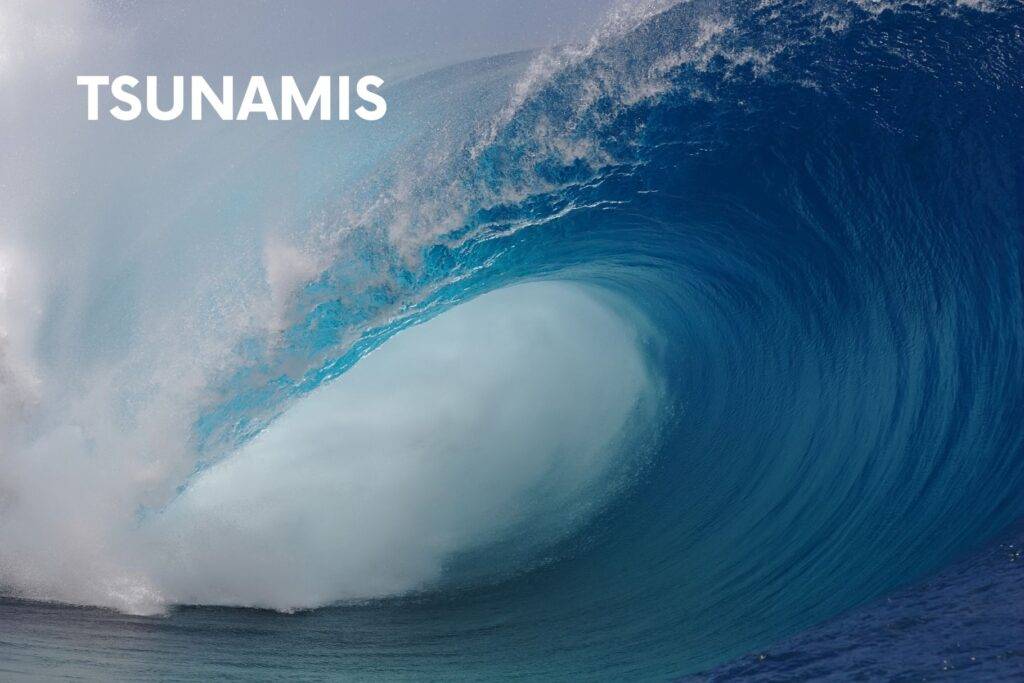
✅ What the Data Says:
Tsunami risk is tied to major offshore quakes along the Pacific coast.
Most countries (Ecuador, Costa Rica, Nicaragua) have coastal evacuation zones and sirens in tourist areas.
Family Prep:
We stay inland if there’s recent seismic activity.
We locate tsunami signage and escape routes at each coastal stop.
For extra security, we use apps like ECU-911 and Earthquake Network with real-time alerts.
Volcanos
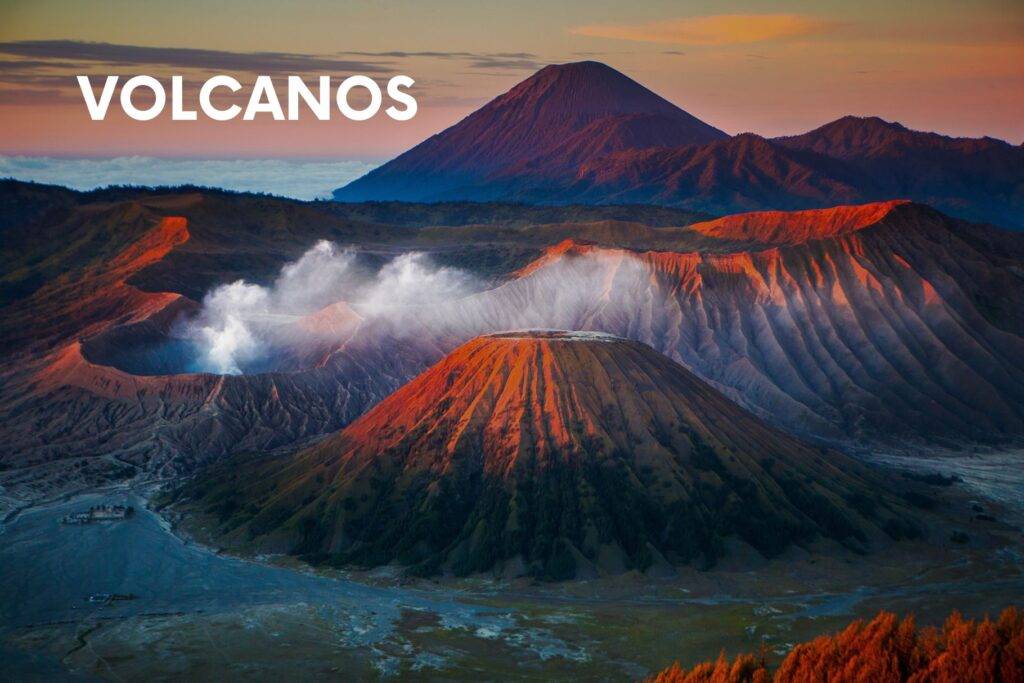
✅ What the Data Says:
Ecuador alone has 22 volcanoes, many of which are “active” but not erupting. Cotopaxi and Tungurahua are closely watched.
Most volcano zones are heavily monitored with color-coded risk systems:
White = Technically active, no risk.
Yellow = Increased activity.
Orange/Red = Evacuation necessary.
Family Prep:
We avoid booking multi-night stays within active red/orange zones.
Our volcano-day hikes (like Cotopaxi) are booked through local guides with radios and updated access info.
Our kids know what to do in case of ash fall (mask up, head indoors).
Tropical Storms & Hurricanes
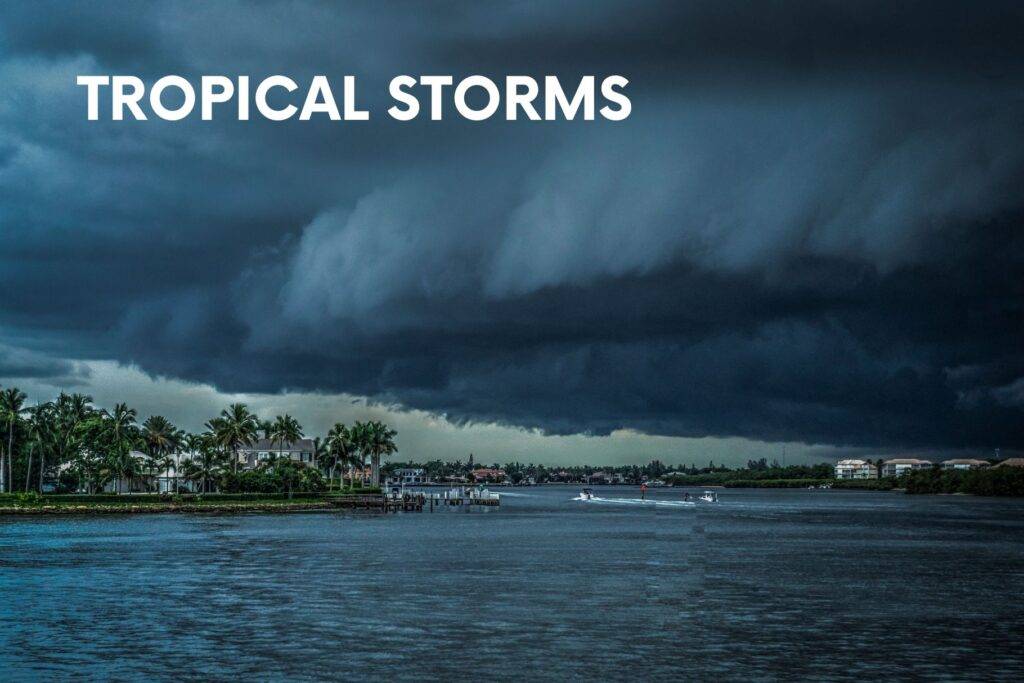
✅ What the Data Says:
The Caribbean coast of Central America (Belize, Honduras, Nicaragua) is most affected, especially October to November.
South America rarely sees full hurricanes, but heavy tropical storms can disrupt travel.
Family Prep:
We avoid hurricane-prone regions during peak months.
We keep an offline copy of our route and flexible backup plans.
We check Smartraveller and FCDO before crossing borders.
Landslides
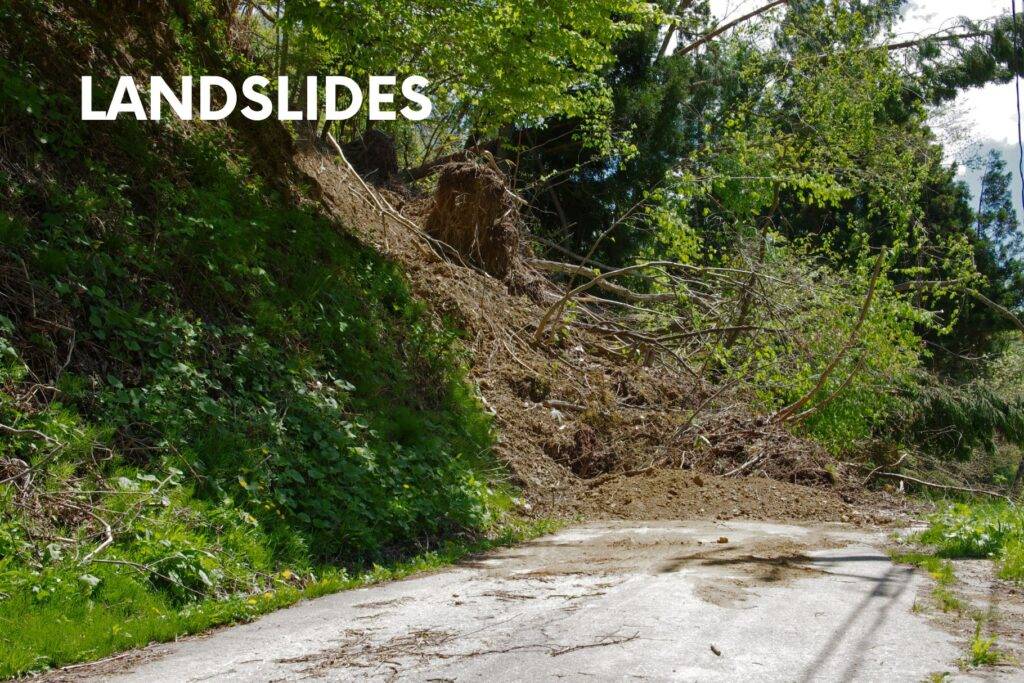
✅ What the Data Says:
Common during rainy season (Dec–May) on mountain roads in Colombia, Peru, Ecuador.
Often caused by sudden downpours, deforestation, or construction zones.
Family Prep:
We plan early morning travel, especially on long drives.
We avoid riding at night in high-altitude terrain (e.g., Andes crossings).
We always have snacks, meds, and emergency water in our day packs, just in case we’re held up on a road closure.
Tools & Alerts We’re Actually Using
| App/Tool | What It Does |
|---|---|
| ECU-911 | Ecuador’s official emergency alert app |
| FCDO Alerts. | UK foreign travel advice per country |
| Smartraveller | Australia’s safety + travel registration tool |
| Earthquake Network | Real-time global quake alerts, good in Andes zone |
| Offline Maps | Downloaded with pins to safe zones and evacuation routes |
Talking About It With Kids
Who to stay with if we get separated.
What to do if they feel shaking or hear a siren.
That they’re part of our plan, not just along for the ride.
We’ve even made it a bit fun: they get to practice safety drills, help check our emergency daypack, and learn a few Spanish words like terremoto (earthquake) and salida de emergencia (emergency exit).
3. Crime & Security, Country-by-Country Lens
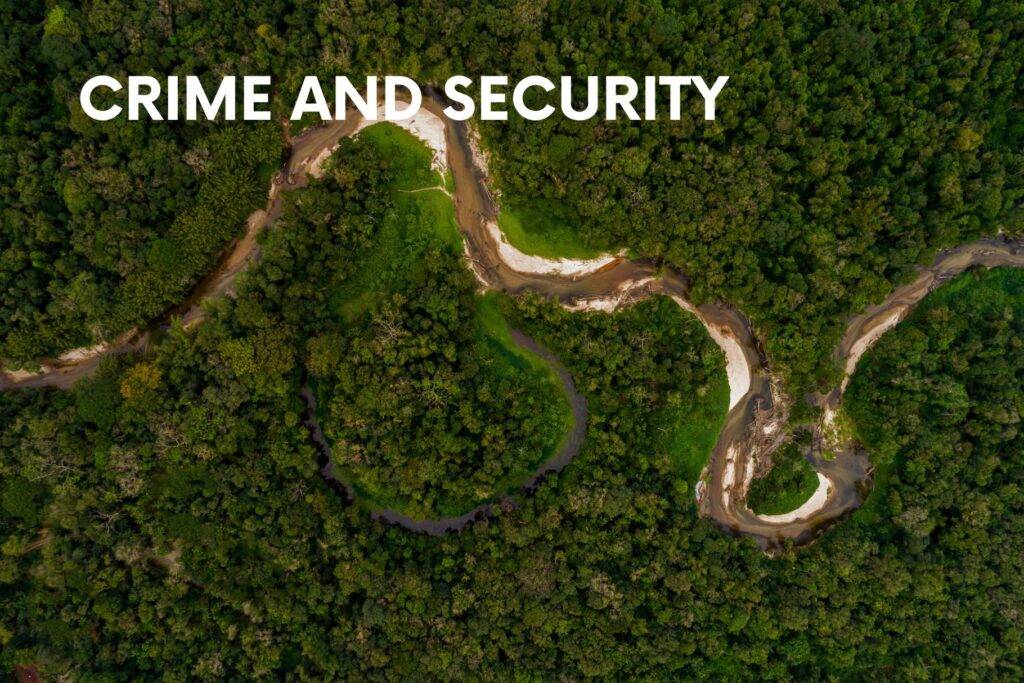
Let’s get into the section most parents (understandably) spiral over: crime.
You hear words like “cartels,” “kidnappings,” “robbery,” and it’s easy to imagine your backpack getting snatched before you’ve even stepped off the plane.
But here’s the truth: most crime in South and Central America is hyper-local, opportunistic, and avoidable, especially for families who don’t flash valuables or wander around like it’s Spring Break.
We broke down the key risks by country, with real data and the actual steps we’re taking to stay safe.
What the Data Actually Says
Petty theft (phones, cameras, wallets) is the most common crime tourists face.
Violent crime and kidnappings? These are extremely rare for foreigners traveling with awareness.
Most issues happen in urban centers, nighttime travel, or in known red zones, all of which are easy to sidestep.
We’re not pretending risk doesn’t exist. But most stats floating online don’t apply to travelers with kids who use official taxis, stay in well-reviewed guesthouses, and avoid sketchy coastal zones after dark.
Our Mental Safety Checklist
Here’s our family’s low-key but high-impact checklist:
✅ Official taxis only (no random rides or Uber clones)
✅ Avoid coastal red zones (looking at you, Esmeraldas, Ecuador)
✅ No jewelry, branded gear, or obvious tech in public
✅ Kids carry family contact cards with local emergency numbers
✅ We blend in: neutral clothes, local transport, low profile
✅ No walking at night unless it’s a short, well-lit, busy route
✅ Every family member knows what to do if we’re separated
Country Risk Table for 2025
| Country | Kidnapping Risk | Tourist Risk Level | Family Safety Tips |
|---|---|---|---|
| Ecuador. | High (coastal areas) | Low (Andes, Amazon) | Avoid Esmeraldas/Guayaquil coast. Use official taxis. |
| Peru | Medium (remote areas) | Low (Lima, Cusco) | Same rules: no night buses, stash valuables smartly. |
| Costa Rica | Very Low | Very Low | Basic street smarts, friendly and stable for families. |
| Colombia | Medium-High (some border zones) | Low (Bogotá, Medellín, Cartagena) | Stick to popular routes. Ask locals before detours. |
| Guatemala | Medium | Medium | Avoid red zones in Guatemala City. Great with guides. |
| Panama | Very Low | Very Low | Extremely stable, high infrastructure + safety levels. |
📌 Note: Stats pulled from FCDO, Smartraveller, and U.S. State Department advisories, but filtered through a family-travel lens. Because a solo backpacker in a party hostel has very different risk exposure than a 5-year-old eating goldfish crackers in a colectivo.
Travelling with Kids = Lower Risk? Actually… yes.
One weird but true insight: families are often seen as non-threatening, neutral, and off-limits in most Latin American cultures. That doesn’t mean you let your guard down, but it’s a reason why we rarely hear of families being targeted in serious crimes.
Locals have been more likely to help us than harm us. Especially when they see you juggling snacks, sunscreen, and a sticky toddler.
Read More: Cost of Living in Central America
Bonus: Safe Transport Rules We Actually Follow
No Uber where it’s not legal, stick to registered taxi services (we often ask our Airbnb host to call one).
Avoid inter-city buses at night, we’ve heard too many first-hand stories of robberies on dark mountain roads.
Keep one “decoy” wallet (a few bills, old cards) and stash real valuables deep in luggage or under clothes.
Use tile tags or AirTags in your luggage and daypacks (lifesaver for tracking).
The Real Security Flex = Awareness, Not Paranoia
We don’t want our kids growing up scared of the world, we want them to grow up prepared to move through it thoughtfully. That means practicing awareness without turning every moment into a worst-case scenario.
We still go to parks. We still take buses. We still stop for ice cream in random towns. We just do it with our eyes open, our phones charged, and a plan for what-ifs.
4. Political Instability & Protests, Should You Worry?
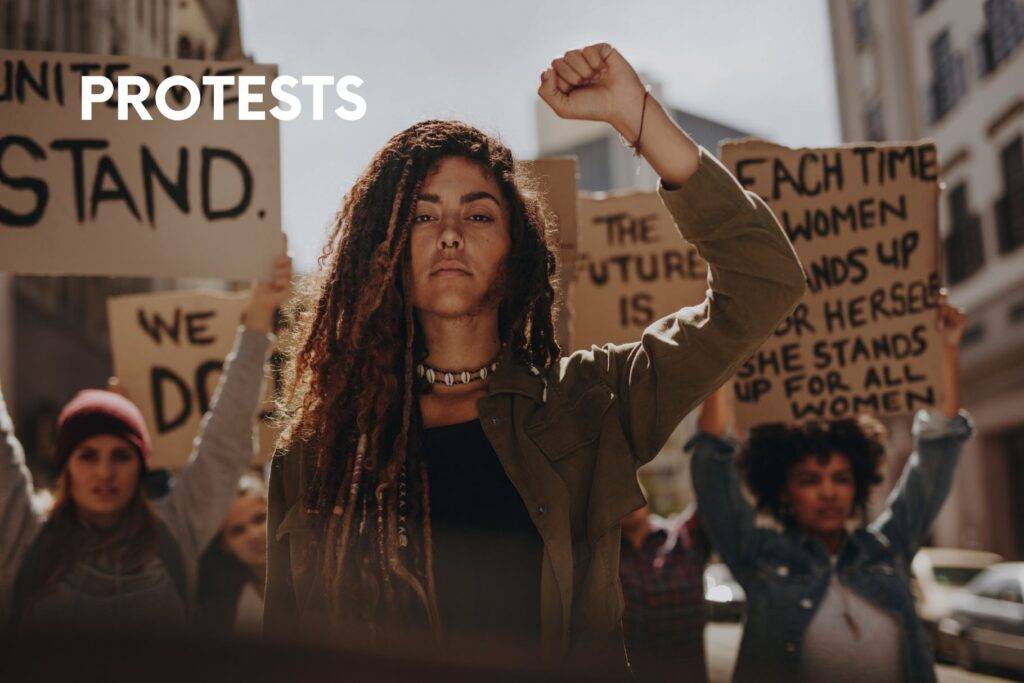
Ah, the good old “Civil Unrest” warning.
It’s the travel advisory phrase that sounds like a riot, but usually looks like people holding signs near a gas station.
What “Civil Unrest” Actually Means
Political instability in South and Central America tends to:
Be localized, short-term, and rarely dangerous to tourists
Arise around election seasons, fuel hikes, or economic protests
Look more like traffic blocks than violent uprisings
The big takeaway? Most families don’t get caught in anything worse than a delayed bus, unless they ignore local news and try to cross a picket line.
Alerts vs. Reality
Governments love to issue broad “Reconsider Travel” warnings for liability reasons. But here’s the thing:
The FCDO, Smartraveller, and U.S. State Department often flag countries for unrest even if 99% of it is peaceful and avoidable.
On the ground, locals are your best intel. Hotel owners, guides, even taxi drivers will usually give you a heads-up if something’s brewing.
In Colombia, for example, we avoided a teacher strike by checking a community WhatsApp group. In Peru, a fuel protest shut down a highway, but only for six hours, and everyone was selling snacks like it was a tailgate.
How We Monitor and Navigate Around It
Here’s how we’re keeping our route safe and flexible:
| Tool / Method | What We Use It For |
|---|---|
| FCDO / Smartraveller | High-level travel alerts and known hotspots |
| Google Maps + Twitter | Real-time roadblocks or protest updates |
| Local WhatsApp/Telegram | Area-specific protest or route alerts |
| Hostel/hotel staff | Honest advice on “go/no-go” areas |
We also follow country-specific Facebook groups (like Expats in Ecuador or Families in Peru) for up-to-the-minute updates.
What We’ll Do If We Get Stuck During a Protest
We’ve prepped our kids for the real possibility that a day trip gets scrapped or we hunker down for a day or two. Our “flex plan” includes:
✅ Building slack days into our route (aka: buffer zones)
✅ Staying stocked with snacks, card games, and offline shows
✅ Booking accommodations with kitchens so we can ride things out
✅ Keeping extra cash on hand in case ATMs go offline
We also teach the kids that “waiting it out” is part of travel, and sometimes the best stories come from unexpected stops.
Real Talk: When to Reroute
We won’t go into areas with:
Known cartel/militia presence
Extended blockades or ongoing violent clashes
Shut-down borders
That means skipping certain border crossings in Colombia or avoiding specific routes in Guatemala during election windows. And that’s fine. We’re not trying to prove anything.
Bottom Line: Political unrest sounds scarier than it usually is.
But we’d rather prep for it and not need it, than get caught out because we didn’t want to “overthink it.”
5. What We’re Actually Doing to Prepare
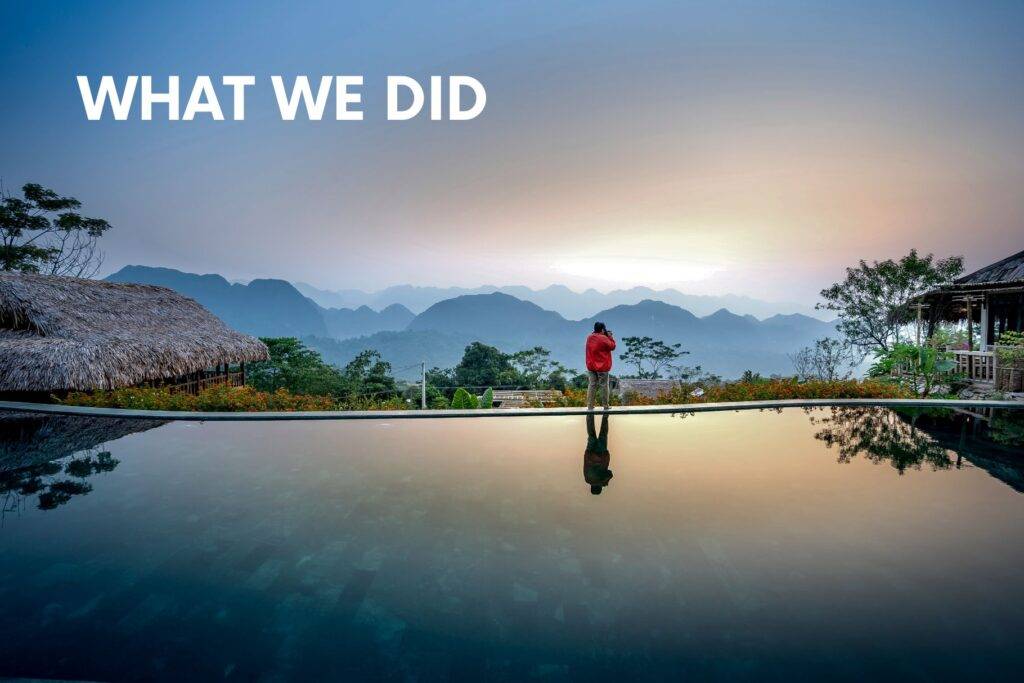
Here’s what we actually did, not what we meant to do, or read in a travel forum at 2 a.m.
This isn’t just “pack a first aid kit and hope for the best.” These are the real-life, repeatable things helping us sleep better while prepping a year of travel with two kids.
✅ Our Family Safety Checklist
Travel Habits That Lower Risk
✅ Only use official taxis or trusted rides via hotel/Airbnb staff
✅ No intercity night buses (ever, even if it’s cheaper)
✅ Dress down, plain shirts, no jewellery, low-key bags
✅ Keep phones zipped away when walking in cities
✅ Separate cards + cash across multiple bags
✅ Stash emergency funds in a belt/hidden pouch
Kid-Specific Safety Prep
✅ Teach emergency phrases in Spanish (for kids too!)
“Necesito ayuda” / “Estoy perdido” / “Llama a mi mamá”
✅ Make emergency info cards (local contacts, embassy, hotel)
✅ Practice “what if” drills: what to do if we’re separated, who to talk to, where to meet
✅ Walk kids through fire escape routes & meeting points at each new stay
Medical & Emergency
✅ Basic first aid + CPR refresher (we used a free Red Cross module)
✅ Medical travel insurance with evacuation coverage
✅ Pre-load emergency numbers in each phone (police, ambulance, embassy)
✅ Save hospital/clinic addresses in offline Google Maps
✅ Pack a mini “go bag”: ID copies, meds, water, emergency snacks, power bank
Communication & Tracking
✅ Register with government travel advisories (FCDO, STEP, Smartraveller)
✅ Use location sharing for parents’ phones (Find My iPhone / Life360)
✅ Offline maps + translator app always downloaded per country
✅ Teach kids how to use WhatsApp voice message (even our 5-year-old can)
Read more: Cost of Living in South America
Our Golden Rule: Slow Travel = Safer Travel
We’re intentionally moving slower, fewer hops, longer stays, more rhythm. Why?
You get to know the neighbourhood
You’re not constantly on edge, navigating new places
You build relationships with hosts, neighbors, local shopkeepers
And when you stay longer, you notice red flags earlier
It’s not about being paranoid. It’s about building safety into your lifestyle so it doesn’t feel like a checklist, it feels like normal.
Want this as a printable PDF? You bet we’ve got one.
Just keep on reading to get to download this PDF.
6. Building Your Own Emergency Plan
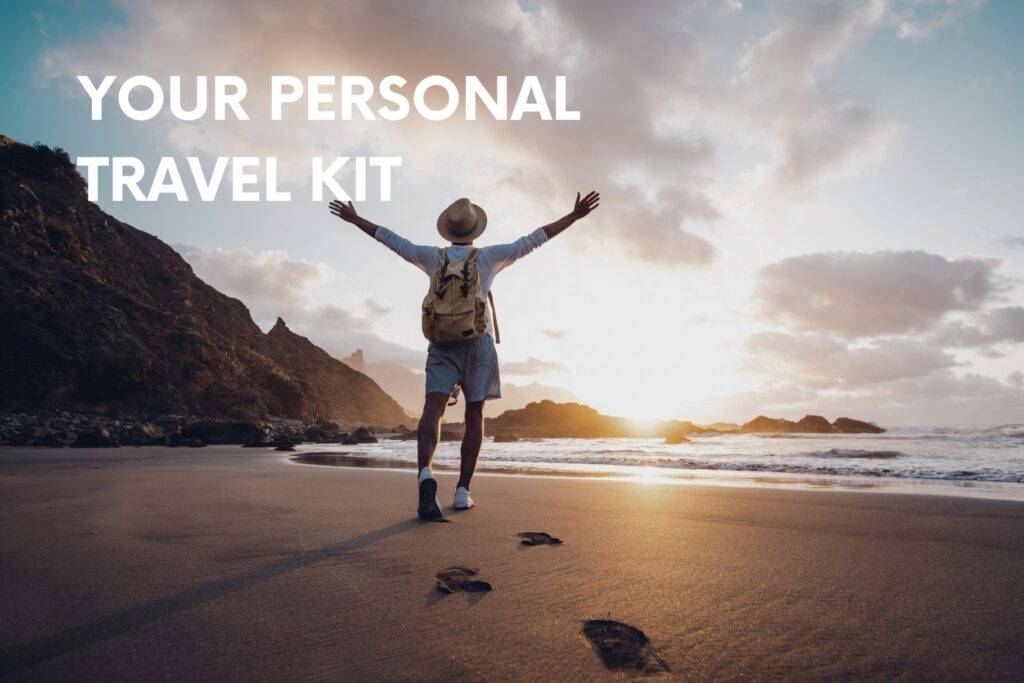
Reading about natural disasters, crime, and protests is one thing. Knowing what you’d actually do if something happened is another.
You don’t need a military-grade bug-out plan. But you do need a clear, realistic system that works for your family, even if you’re mid-transit, mid-tantrum, or mid now-where-the-hell-are-we.
Here’s how we built ours:
Start With What Actually Matters
Before diving into packing or procedures, we asked:
Where are we going?
What’s most likely to happen?
What would we need if we were separated, stuck, or offline?
Everything we built came from those three questions.
Printed + Digital = Backup on Backup
Redundancy is your friend. Ours is a combo of:
| What | Where It Lives
|
|---|---|
| Passport & ID copies | Printed (laminated), cloud, encrypted USB |
| Emergency numbers | Phones, physical card in each bag |
| Medical info & allergies | Written in Spanish & English, in each bag |
| Evacuation plan (PDF) | Printed + in Google Drive + pinned on phone |
| Kids’ info cards | In kids’ daypacks and our wallets |
We also keep a simple “If found, call this number” note in each phone’s lock screen, because you never know.
Teaching Kids Without Freaking Them Out
We want our kids to be prepared, not panicked. Here’s what we’re doing:
Practice saying full names, birth dates, and our real names (not just “mum” and “dad”)
Play the “what would you do if…” game on bus rides
Show them what emergency exits look like in every Airbnb or hostel
Teach safe adults to ask for (police, staff with badges, etc.)
Let them help pack their own “comfort bag” stuffed animal, snack, flashlight, laminated card
The tone is: “you’re part of the team”, not “we expect disaster.”
Pick a Go-To Family Meeting Plan
Just like at home “if we get separated, here’s where we meet.” We choose:
A local landmark (fountain, gate, store)
One backup indoor location (cafe, shop, hostel desk)
Teach kids to stay put if lost — don’t wander
Simple is safe.
Tools We’ve Used to Build Ours:
Google Docs (for sharing editable checklists)
Canva (to make kid-friendly cards with icons and basic Spanish)
Offline maps + pinned locations
One-page PDF with our whole plan — stored on each parent’s phone and in print
7. Our DIY Emergency Guide Kit (FREE Download)
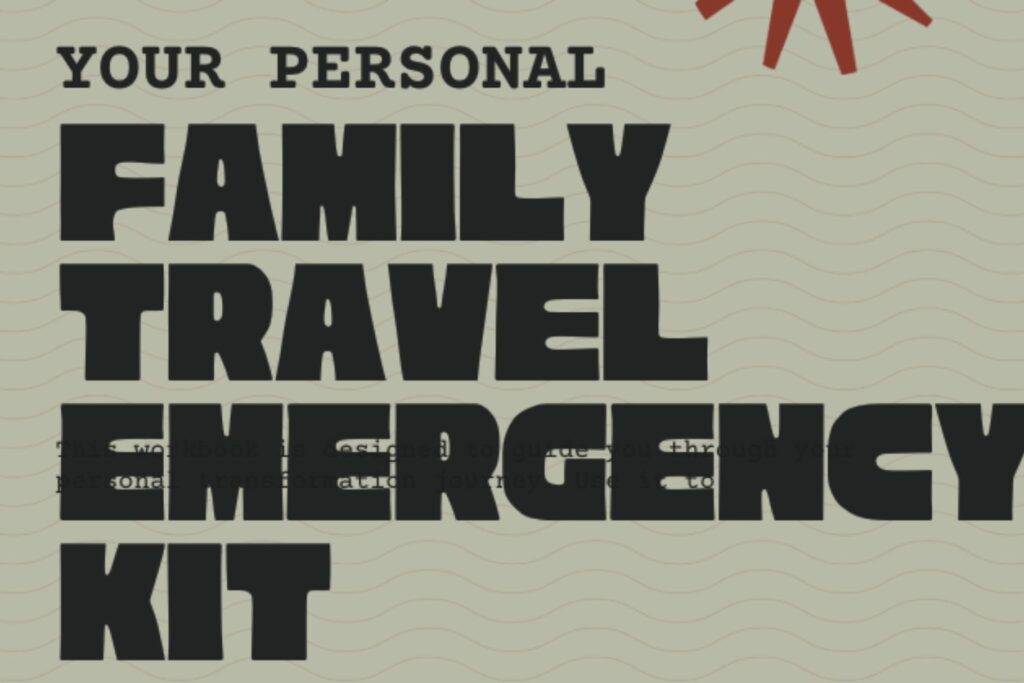
You don’t need to build your family’s emergency plan from scratch.
We already did the work, and we’re giving it to you. For free.
This kit was made for real families, by a slightly overwhelmed dad who read too many embassy pages and just wanted something that made sense.
Here’s What’s Inside
Emergency Number Cheat Sheet
Key numbers (police, ambulance, fire, embassy) by country
Spanish + English versions
Space to fill in local contacts as you go
First Aid & CPR Refresher Links
Short, free resources for parents and older kids
Mobile-friendly videos for basics like CPR, choking, burns
“In Case of Emergency” Email Template
A pre-written message to quickly send to loved ones if something happens
One click, less panic, more clarity
Family Info Wallet Card Template
Print-and-fill card for each kid with:
Full name
Birthdate
Parent contact numbers
Emergency phrase in Spanish
Known allergies/conditions
You can keep these in backpacks, pockets, or shoes. (Yes, we’ve done that.)
8. Final Thoughts: Stay Smart, Not Scared
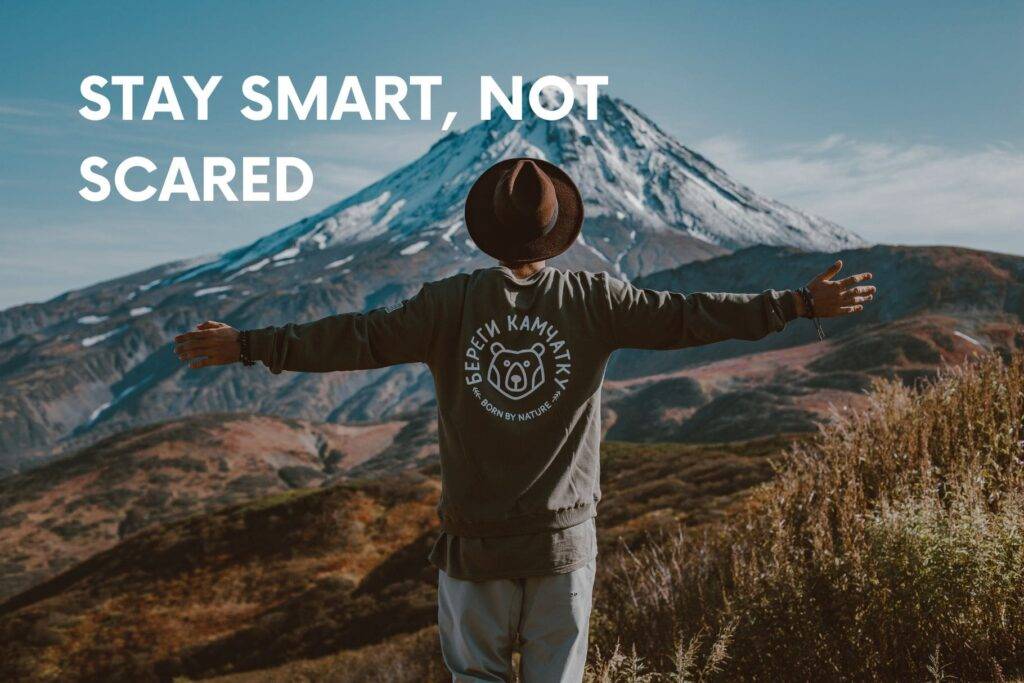
Here’s the thing: most of the scary stuff?
It probably won’t happen.
But we’re not banking on luck, we’re planning like parents, and then letting go like travellers.
What the Stats Say
Let’s zoom out for a second:
The chance of being involved in a serious crime as a tourist in South America?
Less than 0.01%, according to global travel risk indexes.
The odds of being caught in a major natural disaster while traveling for a year? Even lower, especially if you avoid high-risk seasons and regions.
The impact of smart planning?
Pretty much everything. And that’s where this guide comes in.
Why We Still Think It’s Worth It
We didn’t decide to leave the 9–5 and travel with our kids because we thought it’d be easy.
We did it because we believe it’ll be transformative, for them and for us.
Every country has risks. Every life path has trade-offs.
But when we prepare with intention, stay aware, and move through the world with humility and curiosity… we gain far more than we lose.
What our kids will remember isn’t the emergency bag.
It’s the street food in Lima, the hike to a waterfall in Ecuador, the night we played cards in a thunderstorm.
And the fact that mum and dad were calm, clear, and ready, just in case.
So Here’s Our Ask:
✅ Save this post
✅ Share it with another family you know who’s thinking about a big adventure
✅ Download the free kit, or just use one checklist that helps you feel more confident
This isn’t about fear. It’s about freedom with a plan.
And if you’re prepping for your own trip? You’re not alone. We’re right there with you, granola bar meltdowns, safety drills, and all.

